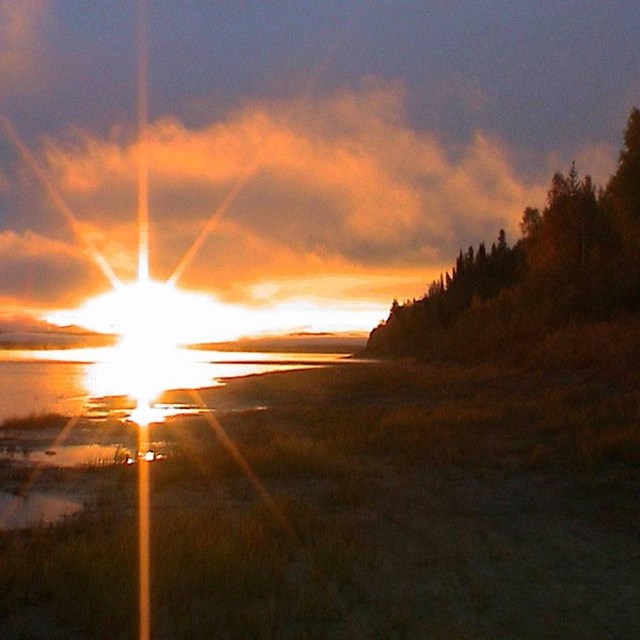
NPS / Jacob W. Frank
The winter solstice in the Northern Hemisphere, or northern half of the Earth, happens annually on December 21 or 22. It marks the shortest day of the year with the least amount of sunlight. This natural phenomenon is caused by the northern half of the Earth being titled as far away from the sun as it can be on its axis, allowing less light to reach the Northern Hemisphere.
The winter solstice has been an important occurrence for cultures around the world for thousands of years. The darkness of winter and return of sunlight has influenced yearlong calendars as well as winter customs, rituals, and storytelling. Cultures also created solar markers, structures, symbols, and communities to align with the sunlight of the solstices. Cultural heritage connected to the winter solstice can be found in many national parks today.

NPS Photo
Winter Solstice At a Glance
On Opposite Sides of the World: When the Northern Hemisphere is having its winter solstice, the Southern Hemisphere is having its summer solstice and starting its summer season. And then the other way around six months later.
Comparing Calendars: The winter solstice around December 21 or 22 is the beginning of astronomical winter, while December 1 is traditionally the beginning of meteorological winter, which is based on general weather patterns instead of astronomy.
Night and Day: The winter solstice is the longest night and shortest day of the year in terms of daylight. Approaching the winter solstice, daylight becomes shorter. As the winter solstice passes, daylight becomes longer.
Blink and You Miss: While often described as a day, the actual winter solstice is technically only a brief moment when the northern half of the Earth is tilted as far away from the sun as possible, but nothing stops moving.
Just the Start or Halfway There: Some cultures consider the winter solstice the start of winter, while others the midway point of the season.
Balancing Out: Equinoxes in the spring and fall mark the halfway point between winter and summer solstices. The length of sunlight and darkness are almost equal on days of the equinoxes.
Experience Winter Solstice in National Parks
Visit a national park during the winter solstice! Here are a few ideas of what you can do:
- Join a ranger program at a national park to learn about different topics related to the winter solstice.
- Learn how cultures observed the winter solstice in the past and present. Many national parks preserve or share cultural heritage around the solstice or the change from darkness to light, such as festivities, solar markers, structures, and traditional stories.
- Take a hike to see breathtaking views with the low lighting of the sun. Be mindful of wildlife, which may change behavior in the winter.
- Experience a long night by visiting parks as north as you can go. National parks in Alaska have almost or full 24 hours of darkness that you can experience.
- Grab your camera for a unique photography experience. The low angle of the sun can change the lighting leading to some stunning shots.
-
 ALASKAYukon-Charley Rivers National Preserve
ALASKAYukon-Charley Rivers National PreserveDuring the winter solstice, the sun peeks out for just two hours in the Yukon. Long nights and clear skies reveal a unique, polar skyscape.
-
 COLORADORocky Mountain National Park
COLORADORocky Mountain National ParkConsidered a time of rebirth, the winter solstice also provides some unique opportunities for photographers and outdoors enthusiasts.
-
 NEW YORKFort Stanwix National Monument
NEW YORKFort Stanwix National MonumentEnglish soldiers and settlers looked to the presence of the sun to mark the passage of the long, dark winter.
Last updated: December 24, 2022
